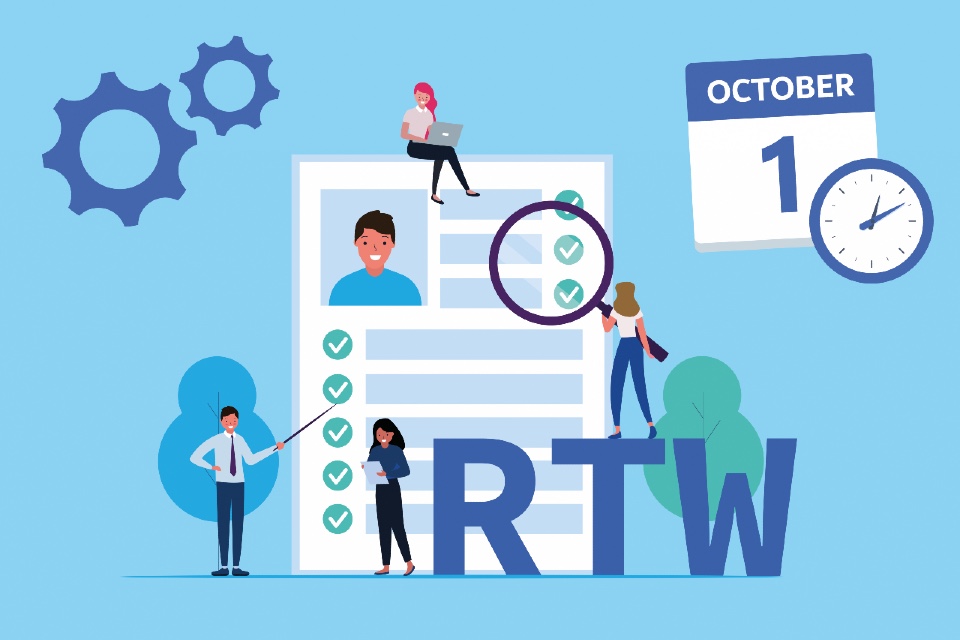By TrustID
Real life questions about the changes in right to work checks, the introduction of digital checks, and why it’s important to act now.
Did you know that from 1st October 2022 the measures for remote right to work (RtW) will change? To get ready, employers really need to act now to make sure you have the right processes in place to carry out fully compliant RtW checks. You could introduce the remote digital Scheme checks for eligible applicants, return to original document checks, or you could use a mix of the two methods. You choose whichever is right for your business. The important thing is not to leave it until the last minute, especially if you’re hiring seasonal staff for Christmas… you could miss out on the best talent!
We know the changes may be confusing, and there’s already enough pressure on busy HR professionals to recruit and retain the right people. That’s why we’ve put together this handy Q&A to take you through some of the questions that we’ve been asked in the lead up to the change.
So, here are four key questions you’re probably asking yourselves, with answers from certified IDSP TrustID and their customers.
1. What difference will digital Right to Work checks make to my recruitment process?
The first thing you’ll notice is speed. Digital RtW checks can reduce your onboarding process from weeks to days, and even days to hours. That’s invaluable in a competitive recruitment environment and gives new employees a positive first impression about your business.
The team at restaurant chain, Eataly told us, “We want the first impression that someone has of us to be really positive and reflect that we’re a modern, forward-thinking organisation. An on-boarding process that’s old-fashioned and difficult doesn’t give that impression.”
2. How can I cut through Right to Work complexity without making it a full-time job?
Compliance is, of course, essential to avoid the penalties of hiring someone without a valid Right to Work in the U.K. But it can also be complex, especially as guidance changes. It first changed to accommodate Covid restrictions about meeting in person and now it’s been adjusted again to include some of the benefits of the digital checks while tightening up remote onboarding. At TrustID, we’ve kept fully up to date with all the changes and have become one of the first certified digital identity service providers (IDSP) authorised by DCMS and UKAS.
Our friends at the ‘wings experts’ Wingstop said, “Since using the TrustID platform, as a business we are given reassurance that our employee’s records remain compliant from a right to work perspective. TrustID communicate regular changes around immigration laws and provide excellent customer service and support.”
This view is echoed by the Head of Talent Acquisition and Retention for Majestic Wine, who says, “Our store managers are not compliance experts, so we needed a solution that could be fluid enough to work for us to support our managers when recruiting regionally. TrustID offers a genuinely good service – I don’t think you could find any better.”
3. Does using technology for Right to Work mean extra cost?
Actually, we’d argue the opposite. The cost of digital RtW checks can be lower than physical, in-person checks. You can also scale a digital RtW service up and down to meet demand. Our services are based on a ‘pay-per-check’ system with a low minimum order value, so you can forecast and stick to your budget. They also save time for you and your new employees, and help you keep on top of your busy recruitment schedule. But what’s more important is that they help you detect fraudulent applications and avoid financial penalties.
For employment, contractor and freelance providers, Advance, “the checks are a small cost to pay for a robust and efficient process to ensure we comply with Home Office guidelines and avoid any fines. We want to put ourselves, workers and suppliers in the best place possible – so this is a no-brainer for us.”
4. How do we find out more about Right to Work?
It’s not easy to keep on top of all the changes that are happening around right to work checks, we understand that. Your business faces enough challenges, TrustID can help take some of the pressure off you. Why not visit our website to explore your options for Right to Work checks moving forwards, and learn more about how technology can support both digital and physical Right to Work checks?
To find out more, click here.






